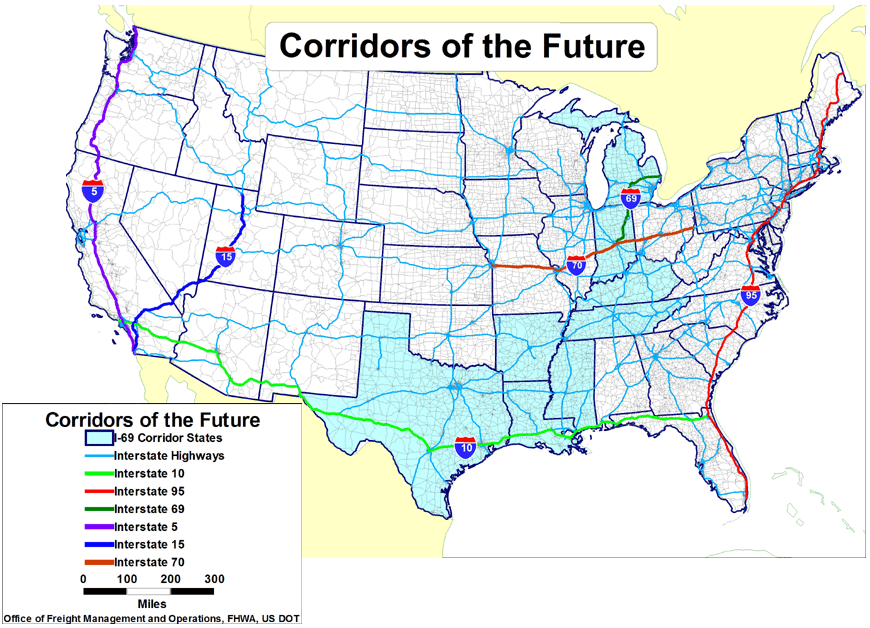U.S. Department of Transportation
Federal Highway Administration
1200 New Jersey Avenue, SE
Washington, DC 20590
202-366-4000
Briefing Room
![]() Subscribe to FHWA Press Releases
Subscribe to FHWA Press Releases

|
FOR IMMEDIATE RELEASE U.S. Department of Transportation Names Six Interstate Routes as "Corridors of the Future" to Help Fight Traffic Congestion The U.S. Department of Transportation today announced six interstate routes that will be the first to participate in a new federal initiative to develop multi-state corridors to help reduce congestion. "We are using a comprehensive approach to fighting congestion along these major interstate routes. What we are doing represents a real break from past approaches that have failed to address growing congestion along our busiest corridors," said Deputy U.S. Secretary of Transportation Thomas J. Barrett. Today's announcement follows a year-long competition to select a handful of interstate corridors from among the 38 applications received from public and private sector entities to join the Department's "Corridors of the Future" program aimed at developing innovative national and regional approaches to reduce congestion and improve the efficiency of freight delivery. The selected corridors carry 22.7 percent of the nation's daily interstate travel. The routes will receive the following funding amounts to implement their development plans: $21.8 million for I-95 from Florida to the Canadian border; $5 million for I-70 in Missouri, Illinois, Indiana, and Ohio; $15 million for I-15 in Arizona, Utah, Nevada, and California; $15 million for I-5 in California, Oregon, and Washington; $8.6 million for I-10 from California to Florida; and $800,000 for I-69 from Texas to Michigan. The proposals were selected for their potential to use public and private resources to reduce traffic congestion within the corridors and across the country. The concepts include building new roads and adding lanes to existing roads, building truck-only lanes and bypasses, and integrating real-time traffic technology like lane management that can match available capacity on roads to changing traffic demands. The Department and the states will now work to finalize formal agreements by spring 2008 that will detail the commitments of the federal, state, and local governments involved. These agreements will outline the anticipated role of the private sector as well as how the partners will handle the financing, planning, design, construction, and maintenance of the corridor. # # # Fact Sheets: |

Best for Printing - The above map is availible as a a PDF: cotf_map.pdf (576 KB)
To view PDF files, you can use the Adobe® Reader®.